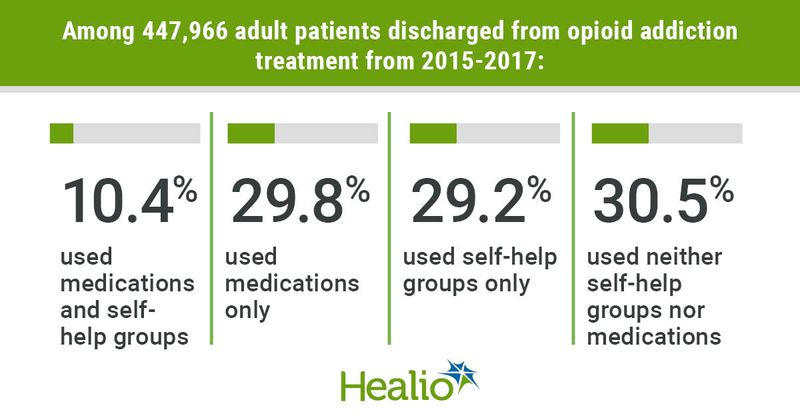Opioid use disorder medication, self-help groups rarely offered together
The National Institute on Drug Abuse states that self-help groups, “so long as they do not discourage participants from taking medications, can be particularly helpful during recovery” from opioid addiction.
However, an analysis published in Health Affairs indicates that adults in the United States with opioid use disorder were rarely provided with buprenorphine, methadone and/or naltrexone treatment and self-help groups in tandem.

“There is an understanding that self-help groups are sometimes antagonistic,” Brendan Saloner, PhD, associate professor of health policy and management at Johns Hopkins Bloomberg School of Public Health, told Healio Primary Care. “The reality is that many patients want both self-help groups and medication as part of their recovery from opioid addiction. We wanted to understand from a national perspective, how often clients use both.”
Hefei Wen PhD — a professor at Harvard Medical School’s department of population medicine — Saloner and colleagues analyzed nationwide data from the Substance Abuse and Mental Health Services Administration from 2015 to 2017 to see if adults who were discharged from opioid addiction treatment used a self-help group, medication, both or neither.
Researchers found that among 447,966 patients, only 10.4% used both; 29.2% used only medications; 29.8% used only self-help groups and 30.5% used neither. The use of self-help groups without medication was most common among patients living in residential facilities, those with criminal justice referrals and those who were uninsured or had private insurance, as well as those in the South and West.
“It is the Wild West out there when it comes to treatment,” Saloner said. “There is no federal mandate on what opioid addiction treatment must include. The most states will do is require certain treatments be offered at residential programs, but quite honestly, that does not happen in most places. These results raise the question of what are we — as a society, as consumers, as health insurance premium payers that are looking for a high-quality treatment experience — paying for?”
Saloner and colleagues encouraged clinicians and researchers use the findings to “identify and overcome barriers to medication treatment and create multimodal paths to recovery.”
- National Institute on Drug Abuse. Step-by-step guides to finding treatment for drug use disorders. https://www.drugabuse.gov/publications/step-by-step-guides-to-finding-treatment-drug-use-disorders/if-your-adult-friend-or-loved-one-has-problem-drugs/support-groups. Accessed June 5, 2020.

